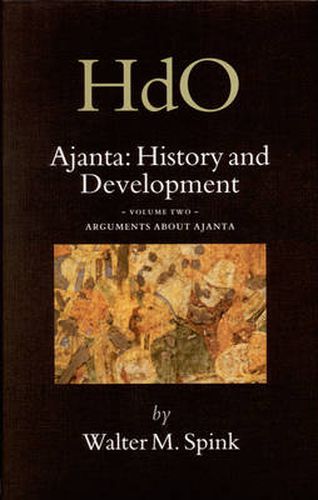Readings Newsletter
Become a Readings Member to make your shopping experience even easier.
Sign in or sign up for free!
You’re not far away from qualifying for FREE standard shipping within Australia
You’ve qualified for FREE standard shipping within Australia
The cart is loading…






Volume Two begins with writings by some of the most important critics of Walter Spink’s conclusions, interspersed with his own responses, using a thorough analysis of the great Cave 26 to support his assertions. The author then turns to matters of patronage, and to the surprising fact that, unlike most other Buddhist sites, Ajanta was purely elitist , developed by less than a dozen major patrons. Its brief heyday traumatically ended, however, with the death of the great emperor Harisena in about 477, creating political chaos. Ajanta’s anxious patrons now joined in a headlong rush to get their shrines dedicated, in order to obtain the expected merit, before they fled the region, abandoning their caves to the monks and local devotees remaining at the now-doomed site. These intrusive new patrons now filled the caves with their own helter-skelter votive offerings, paying no heed to the well-laid plans of the years before. A similar pattern of patronage is to be found in the redecoration of the earlier Hinayana caves, where the careful planning of the work being done during Harisena’s reign is suddenly interrupted by a host of individual votive donations. The volume ends with a new and useful editing of Ajanta inscriptions by Richard S. Cohen.
$9.00 standard shipping within Australia
FREE standard shipping within Australia for orders over $100.00
Express & International shipping calculated at checkout
Volume Two begins with writings by some of the most important critics of Walter Spink’s conclusions, interspersed with his own responses, using a thorough analysis of the great Cave 26 to support his assertions. The author then turns to matters of patronage, and to the surprising fact that, unlike most other Buddhist sites, Ajanta was purely elitist , developed by less than a dozen major patrons. Its brief heyday traumatically ended, however, with the death of the great emperor Harisena in about 477, creating political chaos. Ajanta’s anxious patrons now joined in a headlong rush to get their shrines dedicated, in order to obtain the expected merit, before they fled the region, abandoning their caves to the monks and local devotees remaining at the now-doomed site. These intrusive new patrons now filled the caves with their own helter-skelter votive offerings, paying no heed to the well-laid plans of the years before. A similar pattern of patronage is to be found in the redecoration of the earlier Hinayana caves, where the careful planning of the work being done during Harisena’s reign is suddenly interrupted by a host of individual votive donations. The volume ends with a new and useful editing of Ajanta inscriptions by Richard S. Cohen.